Note: This website was automatically translated, so some terms or nuances may not be completely accurate.
Measuring advertising effectiveness through "action." BMW's challenge utilizing human flow data.
Enhancing ad targeting precision, creating synergies by combining multiple media, visualizing ad effectiveness with compelling data—these are the challenges faced by executives and marketers. BMW Japan, unerry (*1), and Dentsu Inc. presented a unified solution.
Taking the launch of the "BMW 5 Series Touring" as their starting point, the three parties tackled the challenge of data utilization based on "real-world actions" and the advanced integration of cross-media strategies. Centered on unerry's proprietary "human flow" data, they established a system that organically links TV commercials, digital ads, and DOOH (digital out-of-home advertising). This system visualizes the actual actions of those exposed to the ads and connects them to store visits.
We spoke with Tomoko Inoue of BMW Japan, Satoshi Ichieda of unerry, and Hitoshi Sakata of Dentsu Inc. about the background of this initiative, the actual measures taken, the results achieved, and the next possibilities that emerged.
※1 unerry: A company that analyzes human flow big data using AI to capture real-world human behavior, providing marketing services and developing smart city projects. It has particular expertise in data privacy.
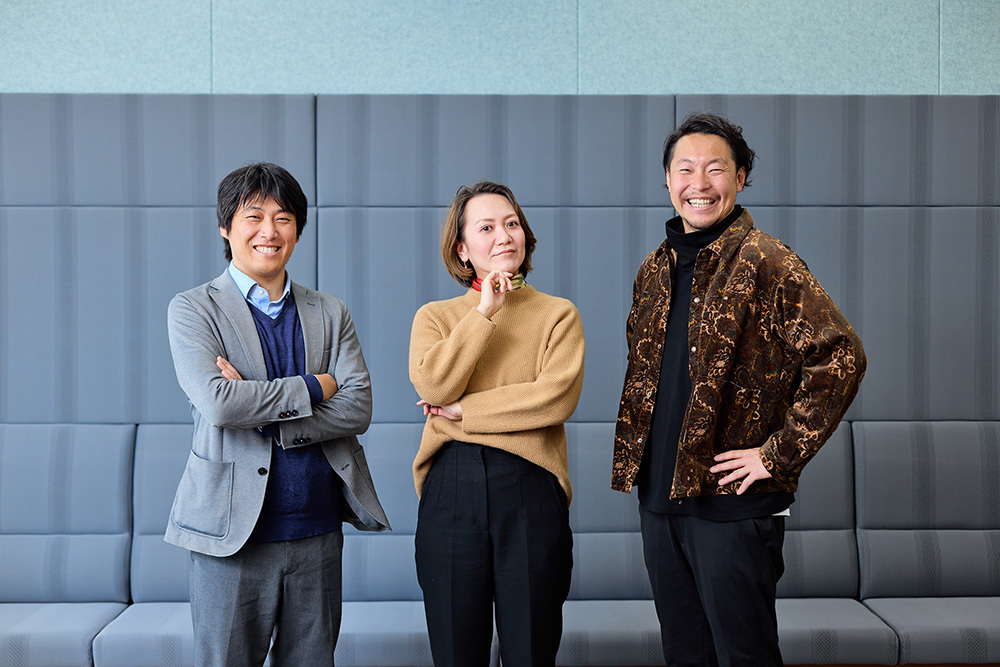
Is this advertising truly driving "store visits"?
──In recent years, the trend of using various data to deliver the most suitable ads to the right people has accelerated. By introducing this initiative, we hope to show many people just how far this can go. First, please introduce yourselves.
Inoue: I handle brand communications at BMW Japan. I oversee all aspects of advertising and promotion, including media planning, creative production, and events for 360-degree communication strategies in the Japanese market. Within this, I lead the team and manage its overall operations.
Kazue: I serve as Senior Vice President for Retail & Media at unerry. I was with Dentsu Inc. until 2020, where I worked on TV planning and media DX. After joining unerry, I've been driving initiatives to visualize media value using people flow data and fostering collaboration with media partners.
──unerry seems to have a strong expertise in handling location-based data.
Kazue: Yes, we collect behavioral data based on smartphone location information within the scope permitted by user consent. We currently hold approximately 84 billion logs per month and a total of 160 million unique IDs (domestic), which we believe is the largest scale in Japan.
Sakata: At Dentsu Inc., I handle media planning for BMW. While "media" might strongly evoke advertising, our work encompasses strategy, events, and more. We collaborate with diverse partners, prioritizing consistency to help companies evolve their brands.
──Thank you. Could you tell us about the background behind planning this solution?
Inoue: This initiative was implemented during the launch of the "BMW 5 Series Touring." With major model launches involving substantial advertising budgets, we felt it was essential to visualize the actual effectiveness of our media investments. While we could track surface metrics like TV commercial GRPs (Gross Rating Points) or web click-through rates, we couldn't see whether customers were actually visiting dealerships.
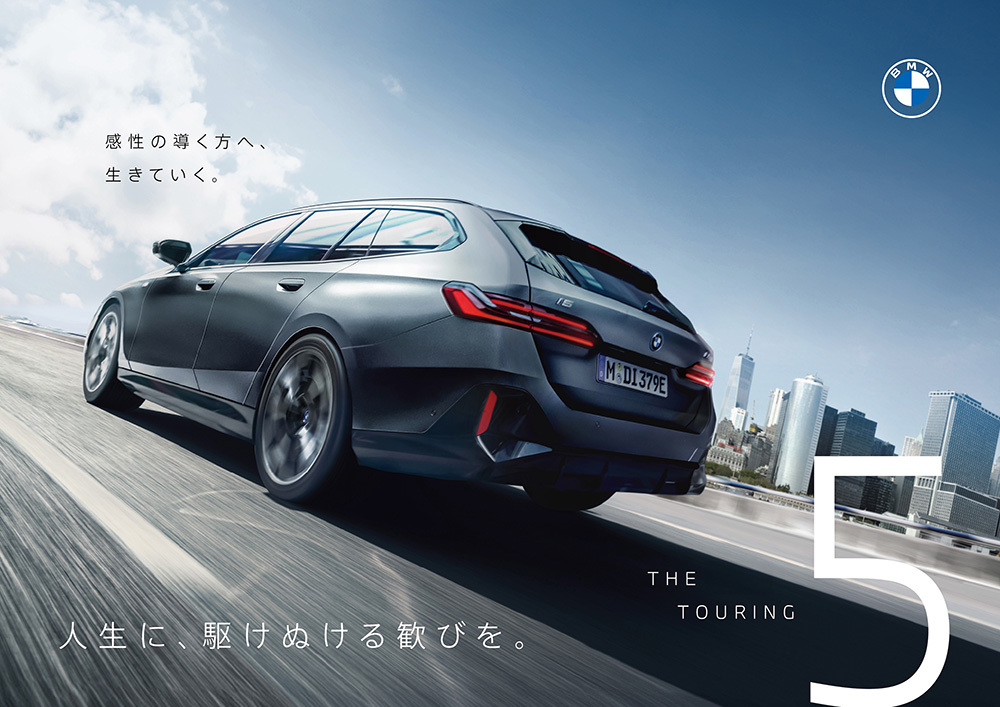
──So, for car sales, getting customers to actually visit the showroom is crucial, right?
Inoue: Yes. For us, negotiations only begin when customers come to the dealership, so verifying whether advertising leads to real-world actions is crucial. We believed that precisely visualizing the effectiveness of our cross-media strategy—across TV, digital, and DOOH—could significantly improve marketing precision and efficiency, even within limited budgets. It was in this context that unerry proposed utilizing their data, and this initiative began.

Kazue: For us, we'd also been seeing some promising results in verifying ad effectiveness using foot traffic data through our business. However, until now, verification was mainly done individually for each media type, like TV or digital.
──So, comprehensive cross-media visualization was relatively rare?
Kazue: Exactly. From the advertiser's perspective, marketing combining multiple media is becoming standard practice, so cross-media verification is inherently necessary. Yet, achieving that has been the current reality. We feel this initiative was particularly novel in addressing that very point.
Sakata: This initiative wasn't just about visualization; its distinctive feature was actually delivering ads to targets who were taking real-world actions. As we'll discuss in detail later, for example, we extracted potential customers likely to visit dealerships from foot traffic data and approached them precisely through digital ads and DOOH. I believe this represented a new application of foot traffic data that hadn't been widely realized before.
──Is the use of foot traffic data still not widely adopted in society?
Kazue: That's correct. While some platform providers offer store visit measurement functions, utilizing foot traffic data across an entire company is still not commonplace. I feel cases where it's used integrally across all media—TV, digital, DOOH—are still rare.
Sakata: For products like BMW's, where "actually seeing and touching the car" is crucial, leveraging real-world foot traffic data is a perfect fit. A major achievement this time was being able to approach potential customers likely to visit dealerships, not just those showing digital search behavior.
Targeting and Cross-Media Campaigns Rooted in "Real-World Behavior"
──Could you tell us specifically what measures were implemented?
Sakata: This project was divided into two main phases. First, to verify the effectiveness of TV commercials, we used unerry's foot traffic data and Dentsu Inc.'s STADIA360 solution to visualize whether people who saw the TV ads actually visited BMW dealerships. This was highly valued by BMW, leading to the next phase: implementing a cross-media strategy combining TV commercials with digital ads and DOOH.
※2 STADIA360: An integrated marketing platform provided by Dentsu Inc. that enables comprehensive marketing KPI effectiveness verification, including digital ad delivery, based on TV manufacturer-sourced viewing data obtained with user consent and permission.
──How did you track viewers' visit behavior when measuring TV commercial effectiveness?
Kazue: STADIA360 links viewing data obtained from TV connection data with smartphone location data acquired by our company, unerry. For users whose smartphones and TVs can be estimated to be linked, this system allows us to confirm where they actually went after watching TV.
Sakata: Naturally, both data sources are limited to IDs for which prior consent has been obtained. We conduct analysis with strict consideration for privacy.
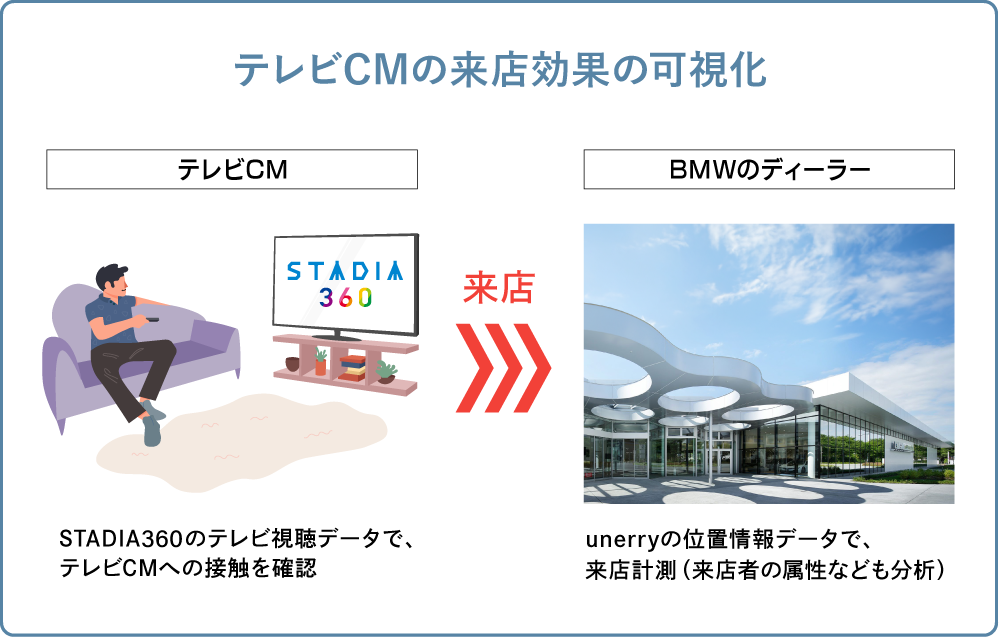
──I understand that after that, you expanded beyond TV commercials to include digital ads and DOOH. How were these utilized respectively?
Sakata: For DOOH, we first identified "areas frequently visited by potential customers likely to visit dealerships" based on unerry's foot traffic data. We then placed ads on LIVE BOARD digital signage in those surrounding areas. This was implemented primarily in central Tokyo areas like Shibuya, Roppongi, and Omotesando, including ads inside trains, across Tokyo and three neighboring prefectures.
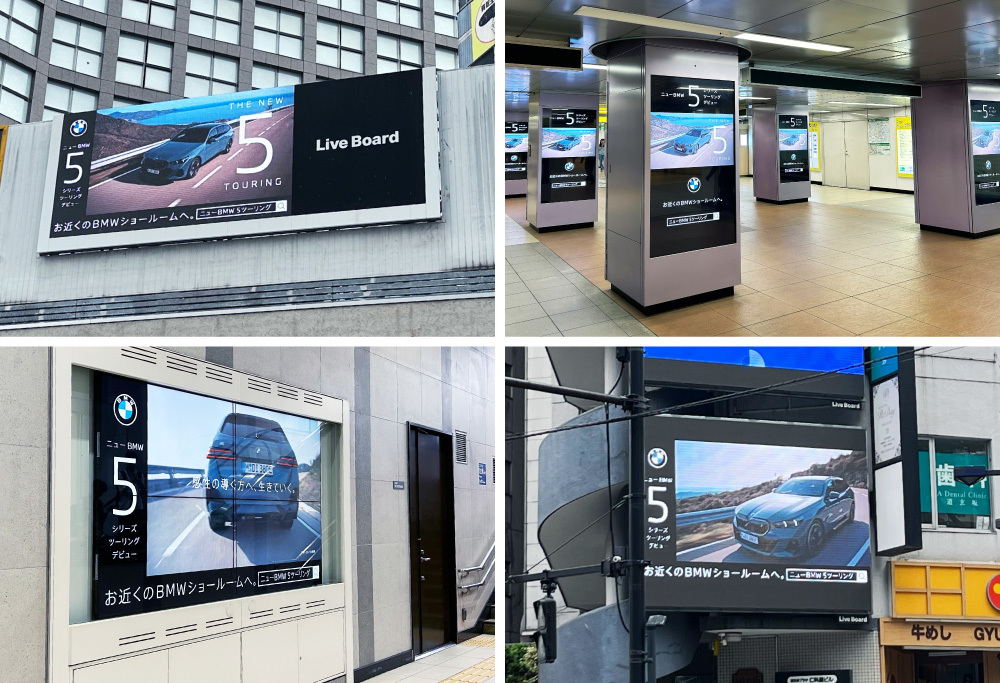
──Regarding digital advertising, which platforms were utilized?
Sakata: We used three: Yahoo! Brand Panel, Meta (Facebook/Instagram), and TVer. For all, we used creative equivalent to TV commercials, ensuring delivery that didn't compromise the brand image. We prioritized maintaining "BMW's essence" while crafting content that would make viewers think "That's cool."
──Did you employ any specific targeting strategies for the ads?
Sakata: As mentioned earlier, we extracted potential customers likely to visit dealerships from foot traffic data and delivered digital ads and DOOH to them. Of course, this was all based on ID data obtained with consent.
Kazue: unerry's location technology allows us to capture information about "where consumers have been" in a flat manner. This enables us to understand the behavior of potential customers likely to visit dealerships, which is the strength of foot traffic data.

──How did you approach those already interested in BMW?
Sakata: We certainly delivered ads to those already interested in BMW. While what we're introducing here is the integrated TV, digital, and DOOH campaign leveraging unerry's foot traffic data, we also ran separate initiatives targeting existing customers and BMW website visitors in parallel as part of the overall media plan.
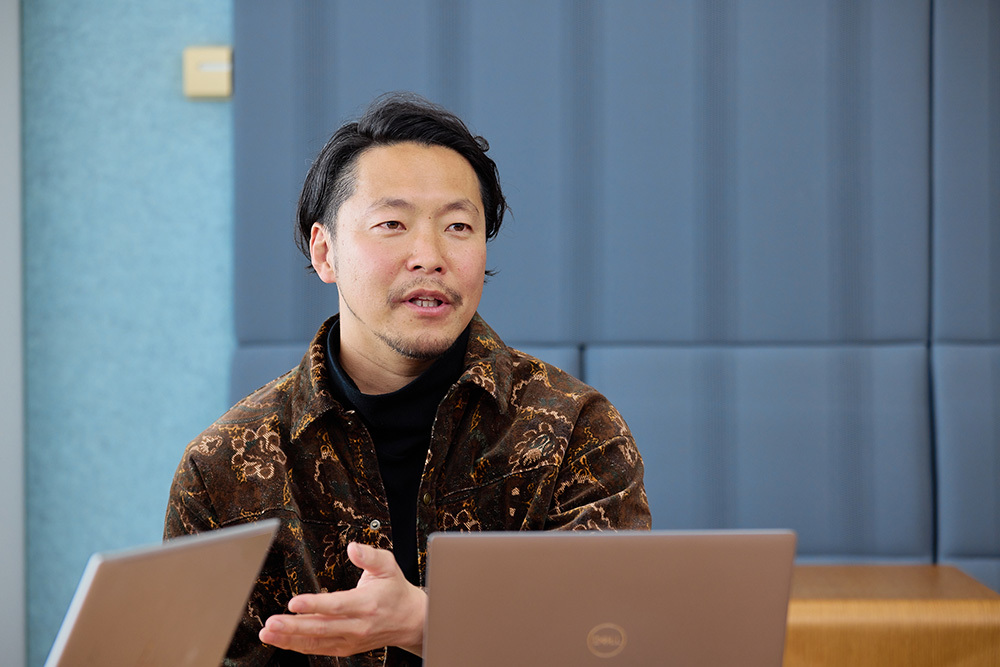
Measuring advertising effectiveness by "who took action," not "who was reached"
──What results or changes did you observe through this campaign? For example, did you see changes in dealership visitor numbers?
Sakata: When we first ran the TV campaign, we compared viewers with non-viewers. We clearly saw a significantly higher dealership visit rate among TV viewers, making the effect visible. It was highly significant to be able to demonstrate this with concrete data, moving beyond relying on qualitative feedback like "I think store visits increased after running the TV ads."
In the next phase, working with unerry, we implemented a cross-media campaign combining TV commercials, DOOH, and digital ads while utilizing foot traffic data. The results showed a tendency for higher visitation effectiveness when combining digital and DOOH compared to TV alone. We also believe the digital ads and DOOH delivered to potential customers likely to visit dealerships achieved efficient reach. The graph below shows the visit rate results. The number of store visits was highest among those exposed to TV commercials, the medium with the largest reach.
Inoue: Exactly. The major achievements were visualizing the effectiveness of TV commercials and proving the synergistic effect of cross-media campaigns.
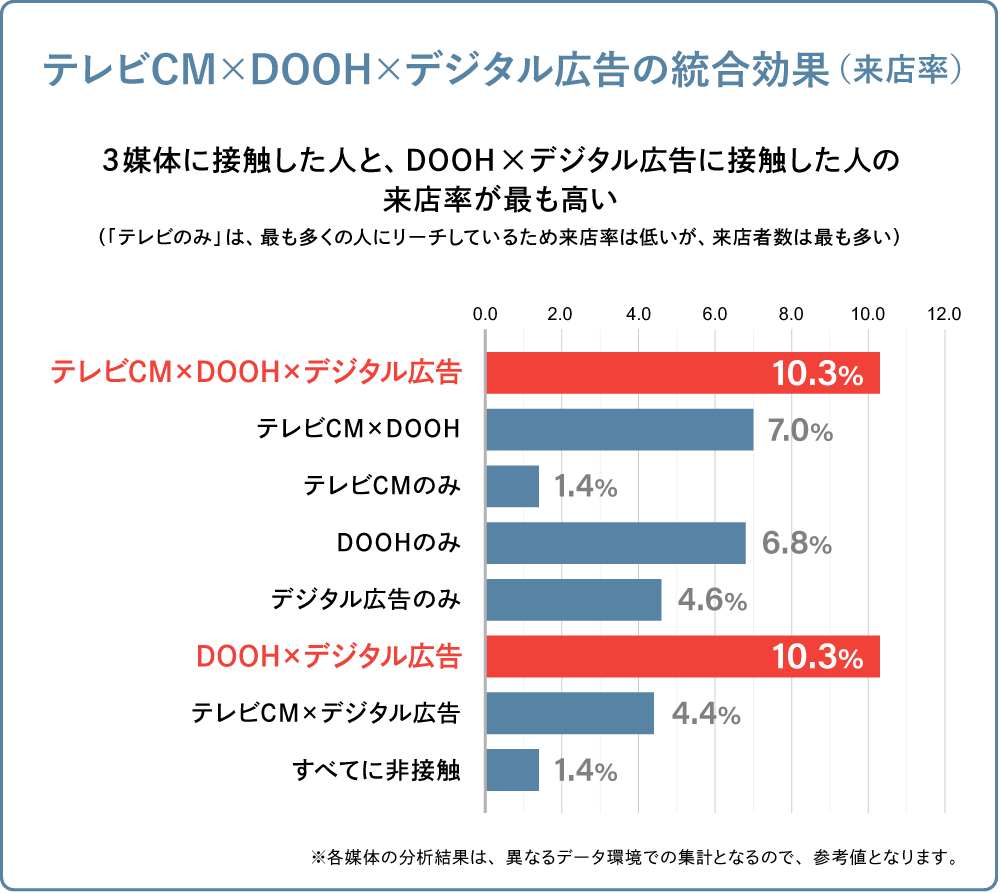
──Did you gain any new insights through this initiative at unerry?
Kazue: The very act of verifying effectiveness across multiple media channels was a highly novel experience. I feel we were able to progress this practically precisely because we partnered with an agency like Dentsu Inc., which can plan media holistically.
──From the perspective of foot traffic data?
Kazue: Hearing directly from Mr. Inoue about the challenges and needs on the ground regarding DOOH was incredibly educational. While we're in the position of presenting what we can do, we can't truly see how it addresses advertisers' specific challenges or when it's most useful without having that actual conversation. It feels like new applications and possibilities keep expanding through these dialogues.
──It seems BMW also gained a lot from this initiative. Were there any particularly memorable points?
Inoue: To reiterate, the biggest achievement was "proving our hypothesis with data." Using foot traffic data added a new perspective to traditional media planning and established a foundation we can apply to other campaigns. Personally, I found many aspects surprisingly effective and very stimulating.
Particularly for the "BMW 5 Series Touring," which targets a relatively older demographic of business owners, we had long been interested in media they frequently encounter, such as DOOH. However, DOOH is a medium where you can't commit based solely on a vague sense of effectiveness. Being able to utilize it this time, with clear, data-driven proof of impact, was highly significant.
Kazue: Precisely that "invisible effectiveness" is a major barrier companies face when adopting DOOH. Visualizing that with our data made it a clear, practical use case.
Inoue: Yes. Proving with data what we intuitively felt "should be done" was a major achievement.
──Do you plan to apply a similar approach to other areas going forward?
Inoue: We're discussing internally about potential collaborations with real estate companies and developers. Combining the data on affluent individuals' movements from unerry with companies that own properties frequented by high-net-worth individuals could create new advertising solutions. While capturing the movements of affluent individuals through data presents challenges, we sense it could be a breakthrough opportunity.
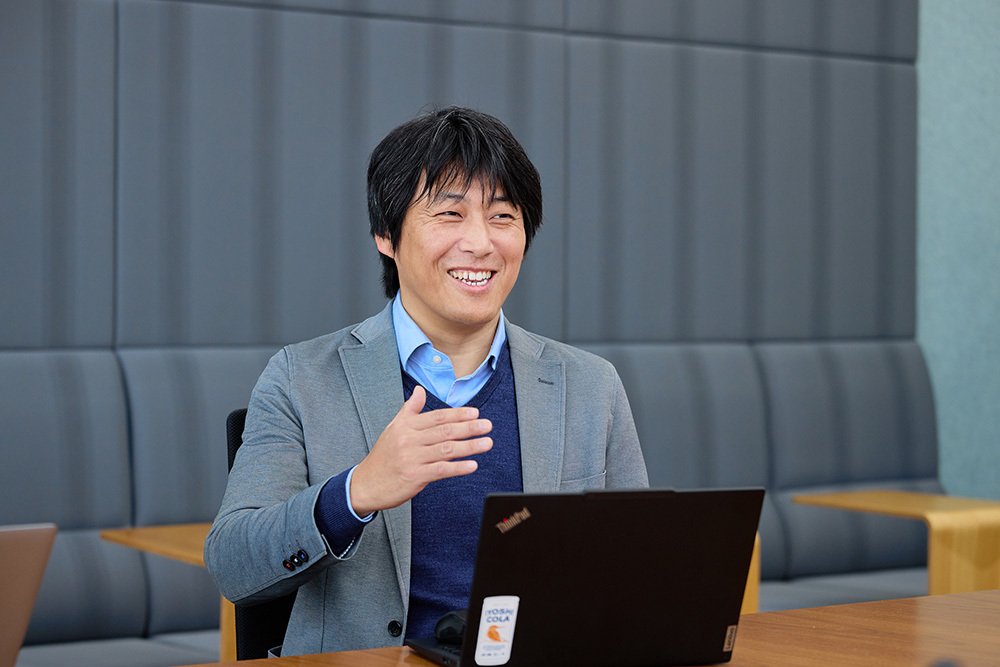
The Combination of "Data" and "Intuition" Evolves Advertising
──How do you envision unerry utilizing human flow data in the future, in terms of fields and formats?
Kazue: There are two major directions. One is the concept of "treating locations as media." For example, by understanding the characteristics of people visiting specific places like stores or amusement facilities, we can design optimal communication there. We're tackling this in the Retail & Media domain, but we see potential to expand to even more diverse locations going forward.
The other is "deepening customer understanding." People flow data captures lifestyle patterns, routines, and even behavioral tendencies by time of day. Even within DOOH, "ads seen at a station in the evening" might resonate more strongly with certain people. Identifying these "moments of resonance" specific to each situation will become increasingly important going forward.
Sakata: Furthermore, people who watch baseball are likely interested in soccer and other entertainment too. Just as museum-goers might visit different exhibitions, we believe foot traffic data can help understand cross-genre interests and preferences. We aim to apply this to targeting within such "leisure contexts" going forward.
Regarding our collaboration with BMW, I believe we are constantly being challenged to ask, "What should we propose next?" If the first phase was TV visualization and the second was cross-media collaboration, then the third phase and beyond will require even more evolved applications. We want to explore the next steps while effectively utilizing unerry's data.
──Compared to previous "data utilization," I get the impression that foot traffic data captures human behavior in a more multidimensional way.
Kazue: Exactly. The strength of foot traffic data lies in enabling us to build advertising strategies based on "what kind of behavioral patterns people have," rather than the flat analysis of "this person is looking at this, so they might like that."
──It seems the use of human flow data could open up new possibilities in the DOOH space as well.
Kazue: That's right. Just as television programming was traditionally scheduled based on viewership ratings, we're entering an era where DOOH can leverage data like "what are the attributes of people coming to this location?" It feels like real-world spaces like station fronts and street corners are all becoming media outlets, much like television stations. With people flow data, I believe DOOH can now enable real media planning.
Sakata: On the other hand, while data is certainly important, I still believe "intuition" and "hypotheses" are indispensable elements in marketing. For example, even though streaming services are growing, is it really wise to shift advertising from TV to streaming services? Making that judgment requires not just numbers, but also our own intuition and experience.
Inoue: I understand. Focusing solely on TV's reach efficiency can sometimes lead to misjudgments. When we feel "this medium might be viable," we first request estimates based on our intuition and then cross-reference them with the numbers. It's a stance of making decisions using both intuition and data as two wheels.
Sakata: We also want to value the mindset of "the numbers are correct, but we don't decide based on them alone." I believe the combination of data and human experience and intuition will become indispensable for branding and marketing going forward.
──Hearing your insights today, I can see new possibilities for integrated media planning through the use of human flow data. Thank you for your time.

Was this article helpful?
Newsletter registration is here
We select and publish important news every day
For inquiries about this article
Author

Tomoko Inoue
BMW Japan Co., Ltd.
Brand Communication Manager
Born in Osaka Prefecture. Studied abroad in the United States during university and worked in Singapore. A marketing communications professional specializing in luxury brands. Possesses experience on both the advertising agency and corporate sides. Hobbies include classical piano, which she has pursued since age three. An amateur pianist who performs in concerts and participates in competitions both domestically and internationally.

Satoshi Ichi
unerry Inc.
Senior Vice President, Retail & Media
Joined Dentsu Inc. in 2007. Gained experience in mass media planning, primarily television. During tenure, seconded to Presentcast Inc. (now TVer Inc.), driving product development and alliances. Joined unerry Inc. in 2020. Serves as SVP overseeing the Retail & Media business.

Hitoshi Sakata
Dentsu Inc.
First Marketing Bureau, Connection Planning Division 2
Marketing Consultant
Starting with media buying, I gained experience across both media and marketing domains, including media strategy, integrated solutions, and sports business. Currently in Marketing Division 1, I drive the design, execution, and validation of integrated strategies from planning and buying perspectives. Beyond project management as a PMO, I design outcomes from an ROI perspective and execute data-driven initiatives. I strive to be a partner who evolves alongside clients while building trust. Leveraging my experience as part of a corporate team that won four consecutive national championships, I currently serve as an active American football coach for the Dentsu Caterpillars. Balancing work and life — on and off the field.
